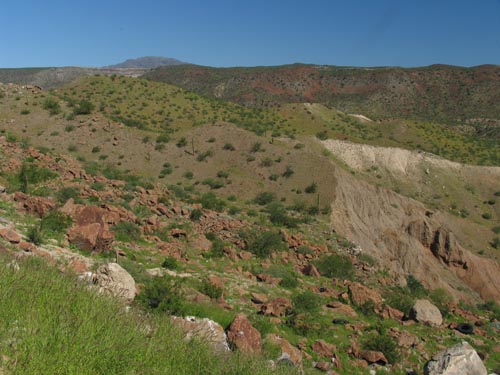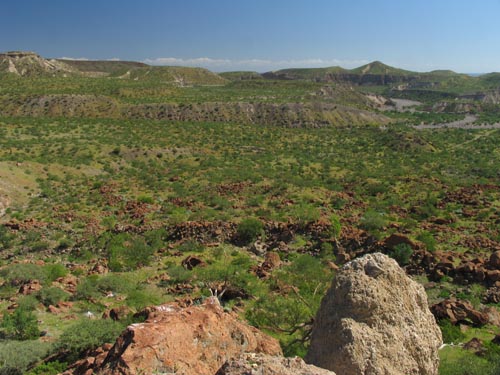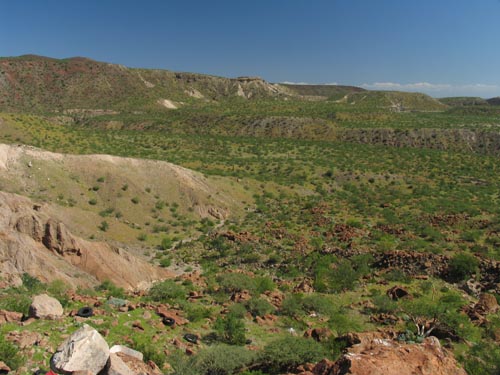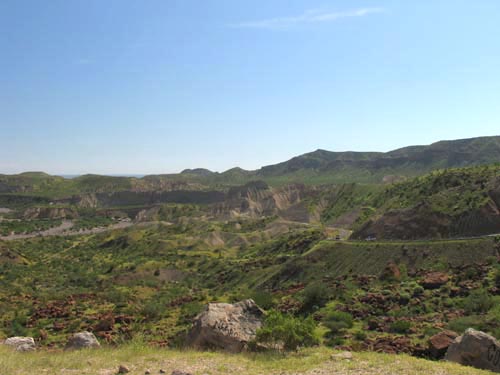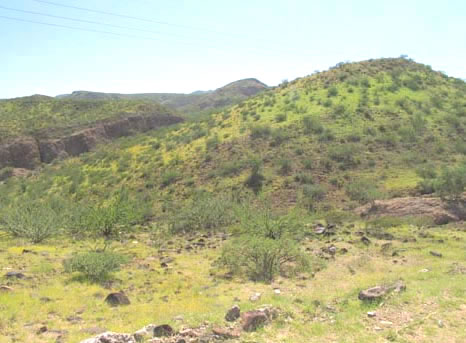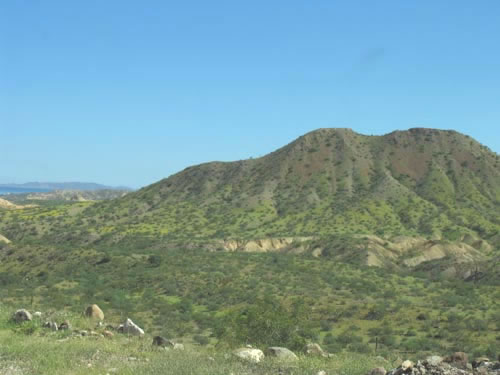Page 1 | Page 2
Las Ecomujeres traveled to Baja California a little more than 3 weeks after Hurricane Jimena (Sep 24-Oct 8, 2009). Besides checking in with our community and friends, we were very interested to see what plants were sprouting and blooming in the desert. A friend convinced us to go down mainly to see the amazing desert landscape that was greening out. Below are some of the photos that we were able to take. You can also find more pages about the history of Hurricane Jimena and its aftermath if you begin on this page.
We are looking forward to returning soon and spending the rest of the year enjoying the winter annuals as well as all the plants that will be blooming in the spring as a result of the heavy rainfall. Enjoy!
The greenery really started just south of the town of Vizcaíno, with Datilillo blooming like crazy as far as could be seen. This lasted until before the Cuesta del Infierno (steep grade before Santa Rosalía).
While there weren´t as many wildflowers blooming as we´d expected, once we got out of the car and walked around just off the highway, we could see that a number of bushes and cacti had blooms.
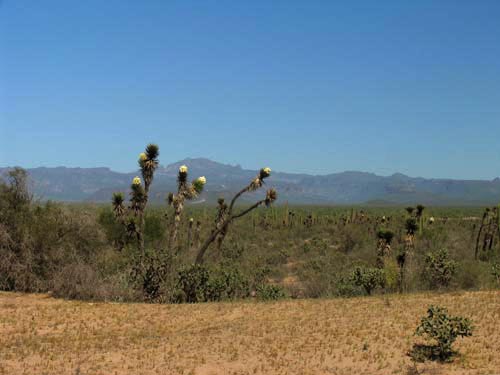
Datilillo in bloom (Yucca valida) near Vizcaíno.

North of San Ignacio.
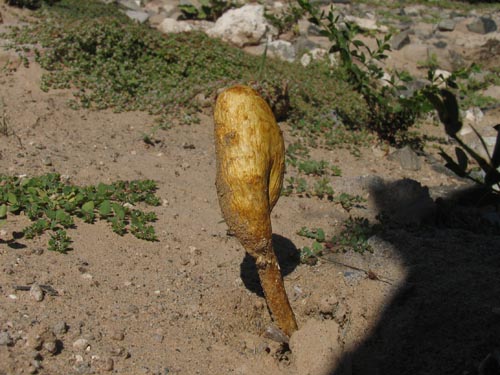
Desert Puffball Mushroom possibly Podaxis pistillaris). A dry mushroom with a fibrous stalk
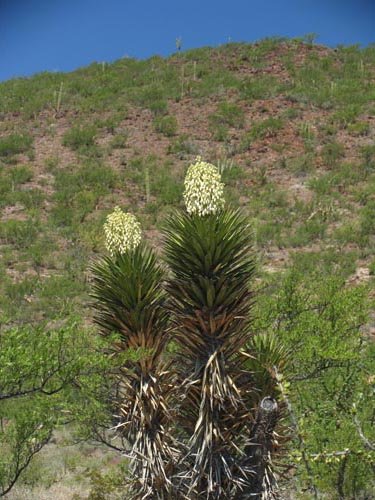
Datilillo in bloom (Yucca valida) near San Ignacio
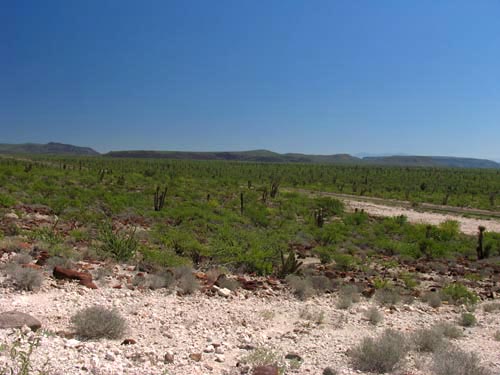
Desert from base of Abulón microwave station north of San Ignacio
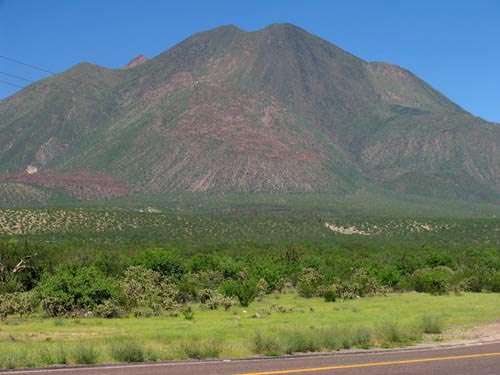
Las Tres Vírgenes volcano field.
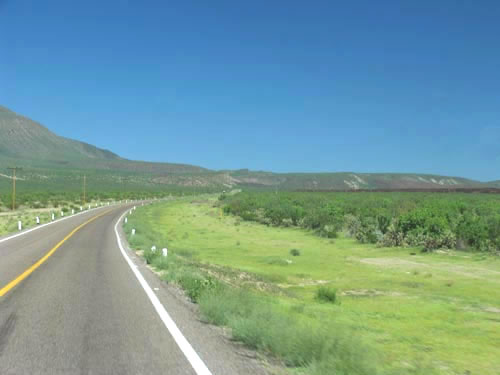
Road side with lots of annual grasses and beginning of perennials near el Volcán Las Tres Vírgenes.
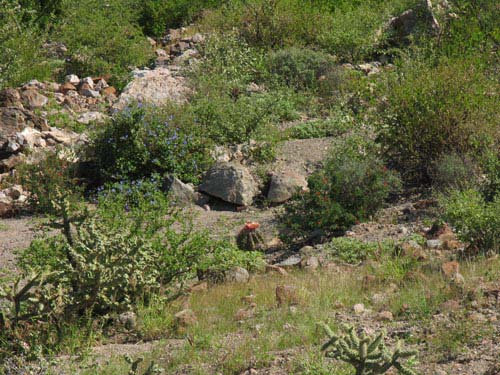
South of Volcán Las Tres Vírgenes (note flowering Barrel cactus at center).
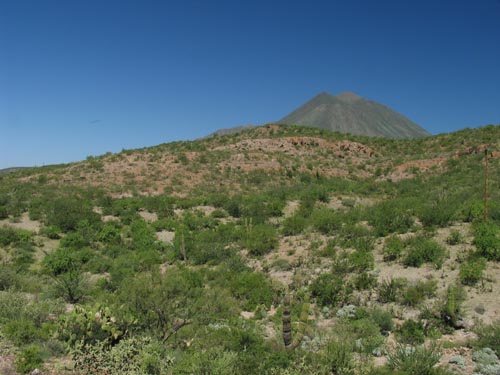
South of las Tres Vírgenes volcano.
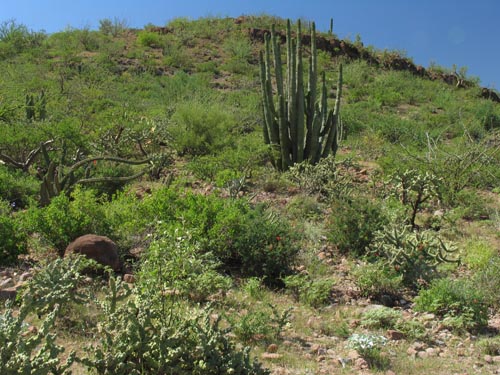
South of las Tres Vírgenes volcano.
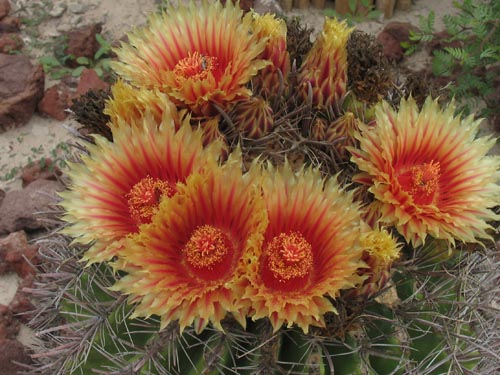
Peninsular Barrel Cactus/Biznaga (Ferocactus peninsulae)

South of Volcán Las Tres Vírgenes. The bit of red in foreground is Fairy Duster (Calliandra californica.)
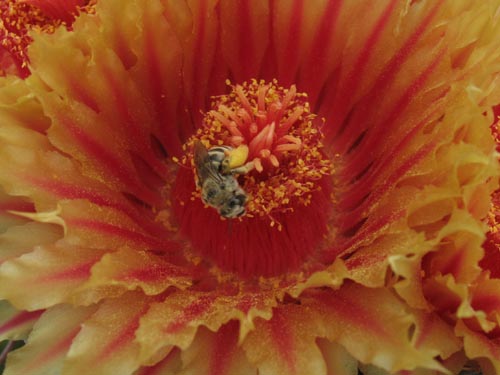
Biznaga (Ferocactus var. peninsulae) with a native bee collecting pollen.
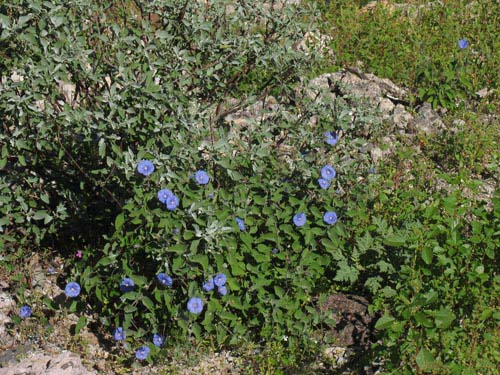
Felt-leaf Morning Glory/Manto de la Virgen (Jacquemontia abutiloides).
This series of 4 photos was taken from about halfway down the Cuesta del Infierno (the major grade north of Santa Rosalía). They flow from the first row left to right then to row two as a panorama.
The next 4 photos were taken at the top of the final grade about a mile before the highway drops to the Gulf of California. Each row has a partial panorama from left to right. The hillsides in all directions were carpeted in yellow (mostly Pectis papposa) and green (small annual grasses like Bouteloua aristidoides and B. barbata).Some pink was thrown in from Trailing windmills (Allionia incarnata).
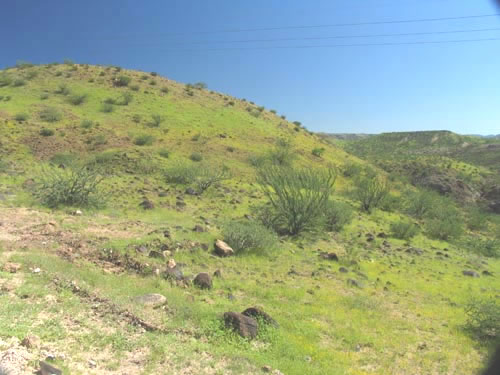
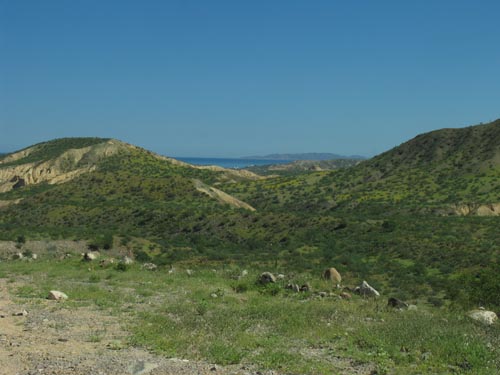
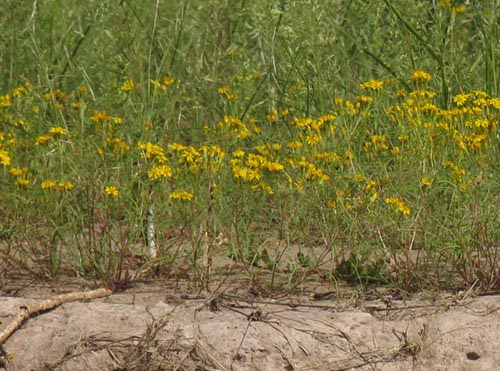
Pectis papposa amid annual grasses (Bouteloua spp., Eragrostis sp.)
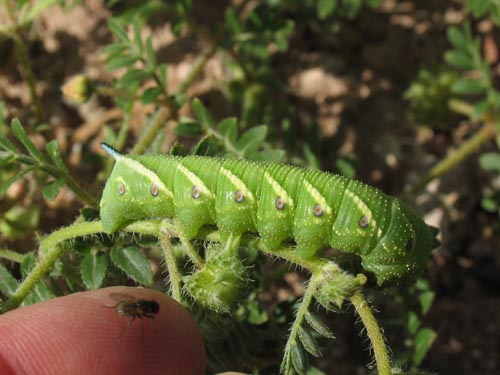
This caterpillar, which looks like it's a tomato hornworm, was found munching on the dreaded weed Goat's head (Tribulus terrestris).
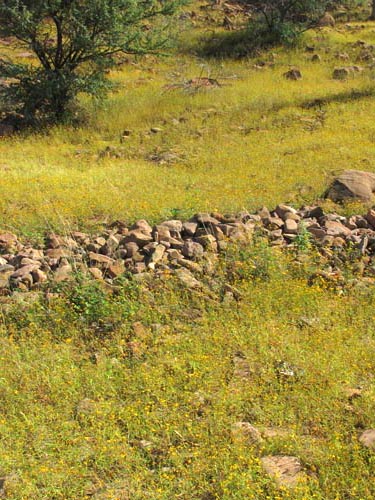
Pectis papposa on hillside.
Our trip took us next to Punta Chivato. We had never seen the place so green in all the 5 years that we had visited and studied the plants there.
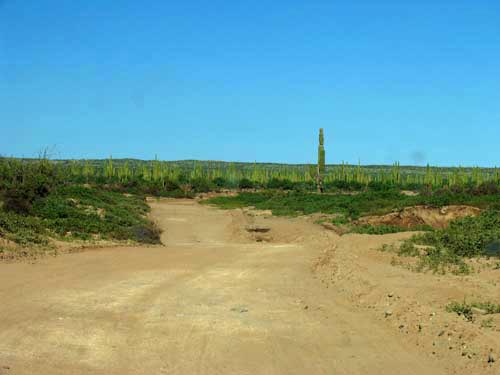
Wash, Punta Chivato
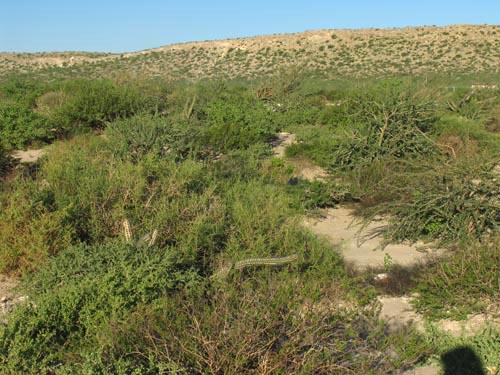
The desert scrub has burst into leaf.
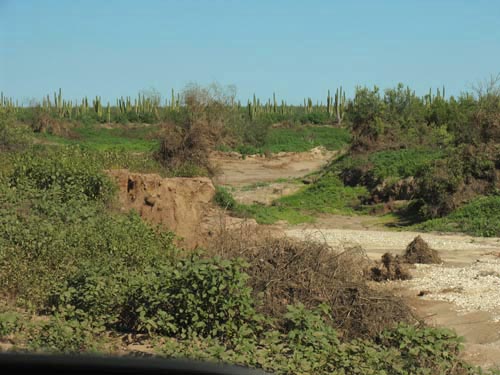
Wash and ground cover, Punta Chivato
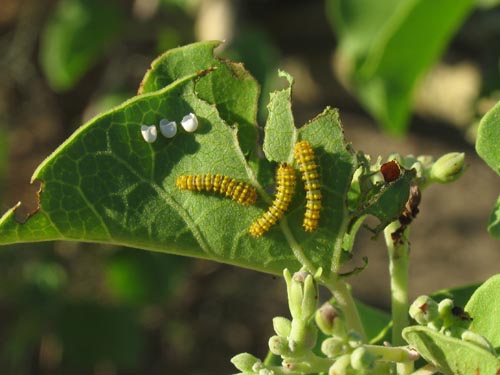
Recently born caterpillar triplets munching heartily on a Lomboy leaf. They were just under an inch long.
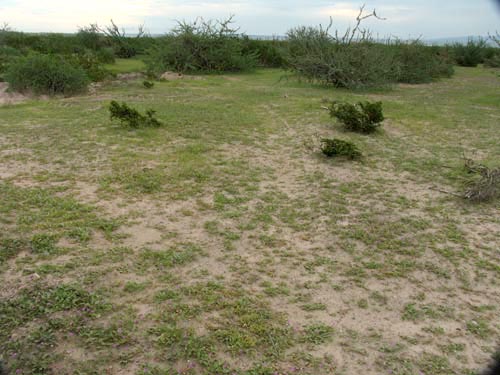
Sandy desert scrub with Trailing Windmills (Allionia incarnata).
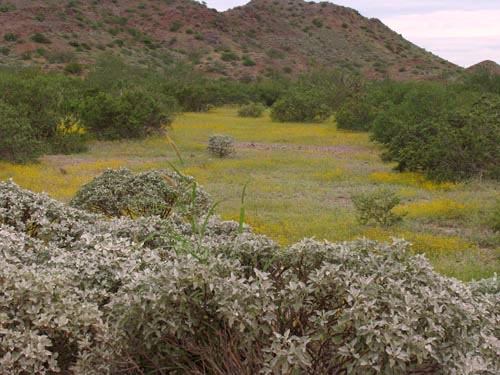
Hillside with Pectis papposa (yellow) and Brittlebush/Incienso (Encelia farinosa) in the foreground, Punta Chivato
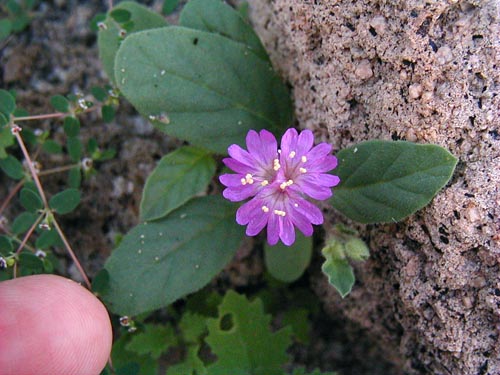
Trailing Windmills (Allionia incarnata).
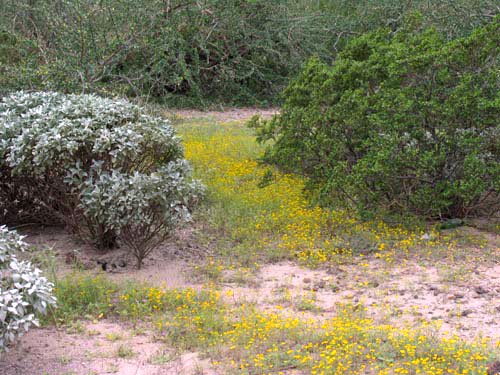
Brittlebush, Many-bristle Chinchweed (Pectis papposa var. papposa) and Creosotebush/Gobernadora (Larrea tridentata)
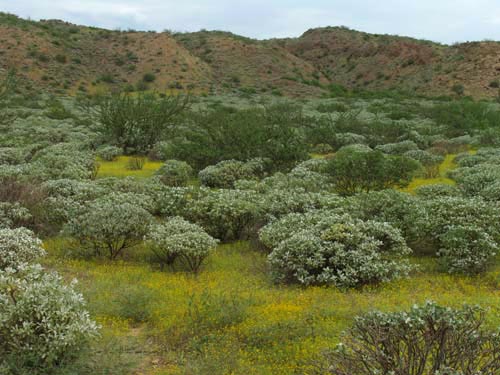
More of the same beautiful landscape.
One of the most prominente plants flowering at Punta Chivato was Devil´s Claw or el Espuela del Diablo (Proboscidea altheifolia).
We drove out to Dolphin Cove/Deadman's beach and we couldn´t believe the number of plants everywhere we could see. There were hundreds of plants of this perennial species growing in sandy soil between the other bushes. Walking out to look at them would guarantee that we´d return to the car with an old fruit hooked on a shoe or ankle.
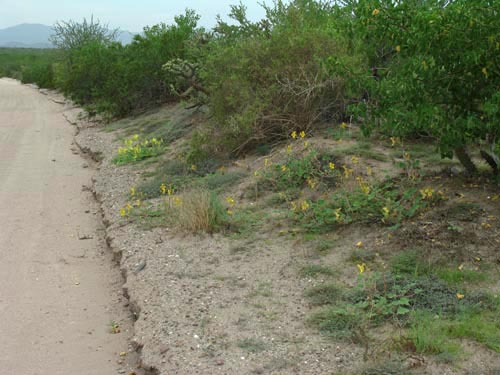
Devil's Claw along the road, Punta Chivato.
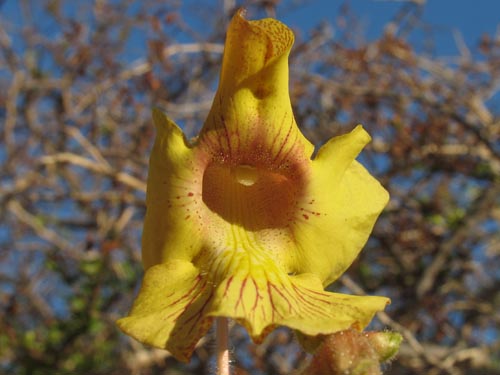
Flower, Devil's Claw.
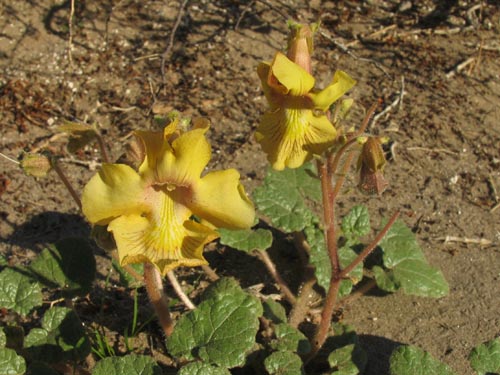
Devil's Claw plant.
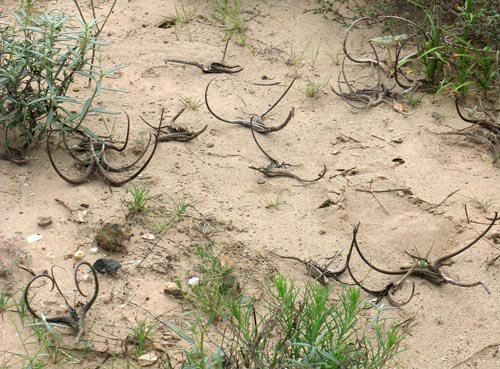
Old fruit, Devil's Claw.
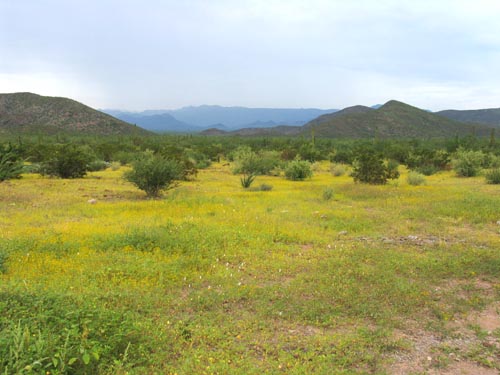
A little north of Mulegé. More Pectis.
We headed to Mulegé where we found even more greenery. While there were some flowers blooming, there weren't as many different species in bloom as we'd expected. Many of the shrubs were in full leaf and we expect that those that normally bloom in the winter and spring will have plenty of resources for a fantastic floral show that is still to come.

Just north of Mulegé on a clear day (finally). The white flowers are Little-leaf Cordia/Vara Prieta (Cordia parvifolia).
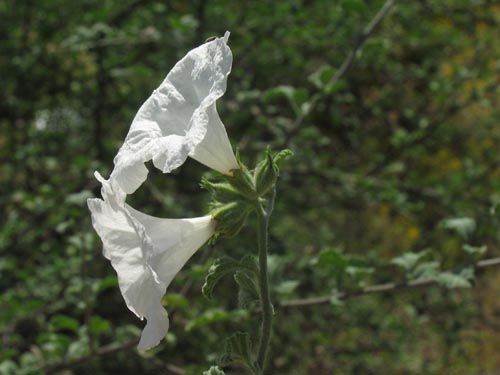
Little-leaf Cordia flowers (Cordia parvifolia).
| 














